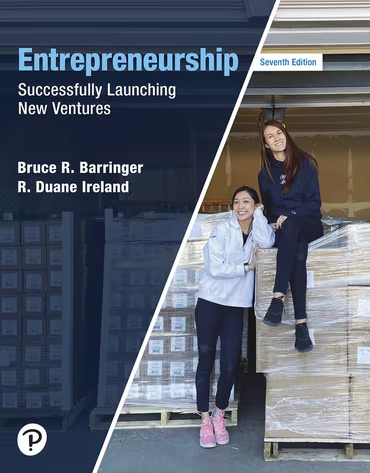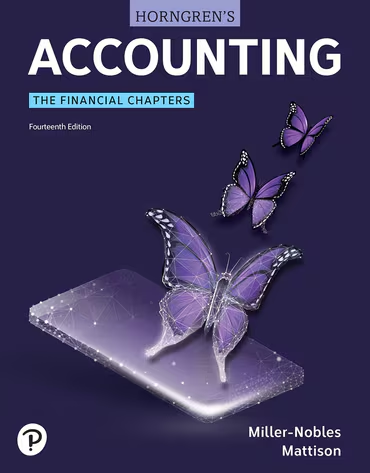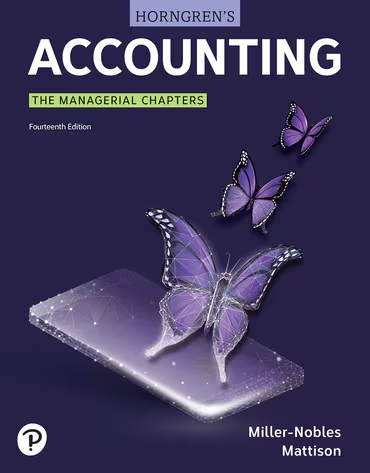
![[eBook] [PDF] For Robust Control Algorithms for Two-link Flexible Manipulators 1st Edition By Kshetrimayum Lochan, Binoy Krishna Roy, Bidyadhar Subudhi, Santhakumar Mohan](https://chegbooks.com/wp-content/uploads/2024/08/Screenshot-2024-08-22-160018-430x607.png)
EBook For Securing the Nation’s Critical Infrastructures A Guide for the 2021–2025 Administration 1st Edition By Drew Spaniel
$120.00 Original price was: $120.00.$20.00Current price is: $20.00.
- ISBN-10 : 1032152087
- ISBN-13 : 978-1032152080
- By Drew Spaniel
EBook For Securing the Nation’s Critical Infrastructures A Guide for the 2021–2025 Administration 1st Edition By Drew Spaniel
Table Of Content
Foreword by Glenn Gerstall
Chapter 1 Chemical
1.0 About the Chemical Sector
Drew Spaniel
1.1 ICS Security in the Chemical Sector—Beyond CFATS
Edward J. Liebig
Chapter 2 Commercial Facilities
2.0 About the Commercial Facilities Sector
Pete Slade
2.1 Digital Supply Chain Security: What Happens When an Organization’s Trusted Solutions Can No Longer Be Trusted?
Pete Slade and Dave Summitt
Chapter 3 Communications
3.0 About the Communications Sector
Tyler Healy
3.1 Accelerating Intelligence to Action
Tyler Healy
3.2 Zero Trust for Critical Infrastructure Requires a New Focus on Secure Communications
Glen Gulyas
Chapter 4 Critical Manufacturing
4.0 About the Critical Manufacturing Sector
Chris Grove
4.1 Transitioning Critical Manufacturing to Cyber Resiliency
Chris Grove
Chapter 5 Dams
5.0 About the Dams Sector
Laura Whitt-Winyard
5.1 Under-Funding Dam Sector Cybersecurity Leads to a Flood of Threats
Laura Whitt-Winyard
Chapter 6 Defense Industrial Base
6.0 About the Defense Industrial Base
Travis Rosiek and Robert F. Lentz
6.1 Accelerating DIB Cyber Security and Information Sharing Transformation
Travis Rosiek and Robert F. Lentz
6.2 What Is CMMC and Why Is It Important
Dr. Darren Death
Chapter 7 Election
7.0 About Election Security: Perspectives on Past, Present, and Future US Political Campaigns
Brigadier General (ret.) Francis X. Taylor, Joseph Drissel, and Matt Barrett
7.1 Action Plan for More Secure Campaigns—Addressing the Gaping Hole in Our Electoral Process
Brigadier General (ret.) Francis X. Taylor, Joseph Drissel,
and Matt Barrett
7.2 Preparing for the Future of Election Security—Recommendations for the 46th President
The Center for Internet Security
7.3 The Race with No Finish Line: Securing the Next Election in the Wake of 2020
Matthew Travis
7.4 The State of Campaign Cybersecurity
Brigadier General (ret.) Francis X. Taylor, Joseph Drissel, and Matt Barrett
7.5 The Price of Liberty—Countering Long-Term Malicious Cyber Influences on Democratic Processes
José de Arimatéia da Cruz
Chapter 8 Emergency Services
8.0 About the Emergency Services Sector
Stanley J. Mierzwa and Lauren Spath-Caviglia
8.1 Case Study—Law Enforcement Digital Forensics and Investigations Review; Results of a Cybersecurity Workforce Readiness Survey
Stanley J. Mierzwa and Lauren Spath-Caviglia
Chapter 9 Energy
9.0 About the Energy Sector
Chris Luras, John Eckenrode, and Donald Heckman
9.1 Securing the Backbone of the US Critical Infrastructure
Chris Luras, John Eckenrode, and Don Heckman
Chapter 10 Financial Services
10.0 About the Financial Services Sector
Hitesh Sheth
10.1 Time for Financial Providers to Lead with Cybersecurity
Hitesh Sheth
10.2 Public-Private Partnership in Fighting the Cyber Threat
Timothy L. Callahan
Chapter 11 Food and Agriculture
11.0 About the Food and Agriculture Sector
Timothy Bengson and Itzik Kotler
11.1 For CPG Companies, a Zero Trust Security Strategy Is the Best Supply Chain Defense
Timothy Bengson and Itzik Kotler
11.2 Software Helps Feed America—How Do We Keep It Secure?
Rusty Sides, Justin Ruth, Will Berriel, Scott McBain, and Michael Deck
11.3 Trust in the Food and Agriculture Supply Chain Starts in the Dirt and Ends on Our Tables
Joyce Hunter
Chapter 12 Government Facilities
12.0 About the Government Facilities Sector
Donald Maclean
12.1 Zero Trust: Buzzword or Panacea?
Donald Maclean
12.2 Outdated and Left Behind: Improving and Innovating Our Government Facilities
Dr. Nikki Robinson
12.3 Recommendations for Securing Government Facilities
Dr. Ron Martin
Chapter 13 Healthcare and Public Health
13.0 About the Healthcare and Public Health Sector
Krishnan Chellakarai and Itzik Kotler
13.1 How to Navigate a New Era of Threats to the Healthcare Sector
Krishnan Chellakarai and Itzik Kotler
13.2 Direct Patient Care Subsector Cybersecurity State of the Union
Joey Johnson
Chapter 14 Information Technology
14.0 About the Information Technology Sector
John Fanguy
14.1 Cybersecurity and Zero Outage: Where CISOs and Mission Leaders Align
John Fanguy
14.2 Managing Global Supply Chains and Their Impact on US Critical Infrastructure: What Do Critical Infrastructure Sectors Need to Do,
Now and in the Future
Donald R. Davidson Jr.
Chapter 15 Nuclear Sector
15.0 About the Nuclear Reactors, Material, and Waste Sector
Drew Spaniel
15.1 “Security by Isolation” Inhibits Nuclear Sector Resilience and Potential
Drew Spaniel
Chapter 16 Local and State Government
16.0 About State and Local Government Cybersecurity
Rita Reynolds
16.1 Emerging Threats and Challenges Facing State and Local Governments and Why They Should Be Considered Critical Infrastructure
Marcela Denniston, Alycia Farrell, Peter Liebert, and Jason Smith
16.2 Innovations for State and Local Governments
Marcela Denniston, Alycia Farrell, Peter Liebert, and Jason Smith
16.3 Recommendations to Improve the Cyber Resilience of State and Local Governments
Marcela Denniston, Alycia Farrell, Peter Liebert, and Jason Smith
Chapter 17 Transportation
17.0 About the Transportation Sector
Jerry L. Davis
17.1 From the Ground, through the Air, and Beyond Out There: Over the Horizon Opportunities, Risks, and Challenges in the Transportation System Sector
Jerry L. Davis
Chapter 18 Water and Wastewater Management
18.0 About the Water and Wastewater Systems Sector
Dr. Bradford Sims
18.1 Florida Water Treatment Attack and the Implications for Critical Infrastructure and Cybersecurity—An Exegesis
Dr. Ian McAndrew
18.2 Adhering to 12-Stage Process for Achieving Cyber Secured Water and Sewage Operations
Daniel Ehrenreich
Description
Quantum Dots and Polymer Nanocomposites: Synthesis, Chemistry, and Applications is a book about special materials made by combining quantum dots (tiny particles) with polymers (a type of plastic). It explains how these materials are made, what they can do, and how they might be used in the future.
The book talks about how scientists make and shape these materials, how they work, and how they can be made stronger. It also looks at whether these materials are safe for people and the environment.
Some cool uses for these materials include helping doctors, cleaning up pollution, creating sensors, and speeding up chemical reactions. The book also shares ideas for new ways to use them. It’s perfect for students and scientists who want to learn about these exciting materials!
Instant Downloads
At Library Sources, we make it easy for you to get your eBooks and solution manuals right away. After you buy, you can download your books instantly. No waiting! Just finish your purchase, and you get a link to download your stuff right away. We have many books for all subjects, so you always find what you need. Our service helps students, teachers, and professionals get the books they need quickly and easily.
Benefits Of Buying Solution Manuals From Library Sources
Here are the benefits of buying eBooks or solution manuals from Library Sources:
- Instant Access: Get your books and manuals immediately after purchase.
- Convenience: Download your materials from anywhere, anytime.
- Wide Selection: Choose from a large variety of subjects and topics.
- No Shipping Costs: Save money by not paying for delivery.
- Environmentally Friendly: Digital books reduce paper usage.
- Searchable Text: Easily find information within the book using search functions.
- Portable: Carry your entire library on your device.
- Cost-Effective: Often cheaper than physical copies.

![[eBook] [PDF] For Securing the Nation's Critical Infrastructures A Guide for the 2021–2025 Administration 1st Edition By Drew Spaniel [eBook] [PDF] For Securing the Nation's Critical Infrastructures A Guide for the 2021–2025 Administration 1st Edition By Drew Spaniel](https://chegbooks.com/wp-content/uploads/2024/08/Screenshot-2024-08-22-155943.png)








Reviews
There are no reviews yet.